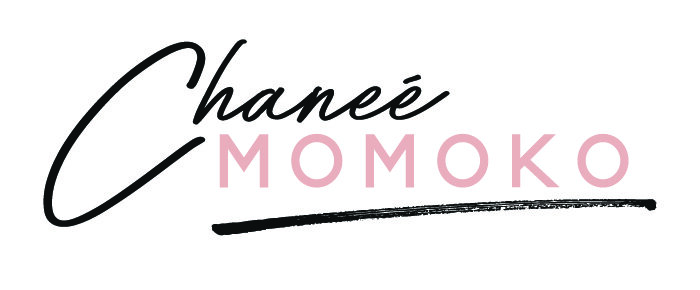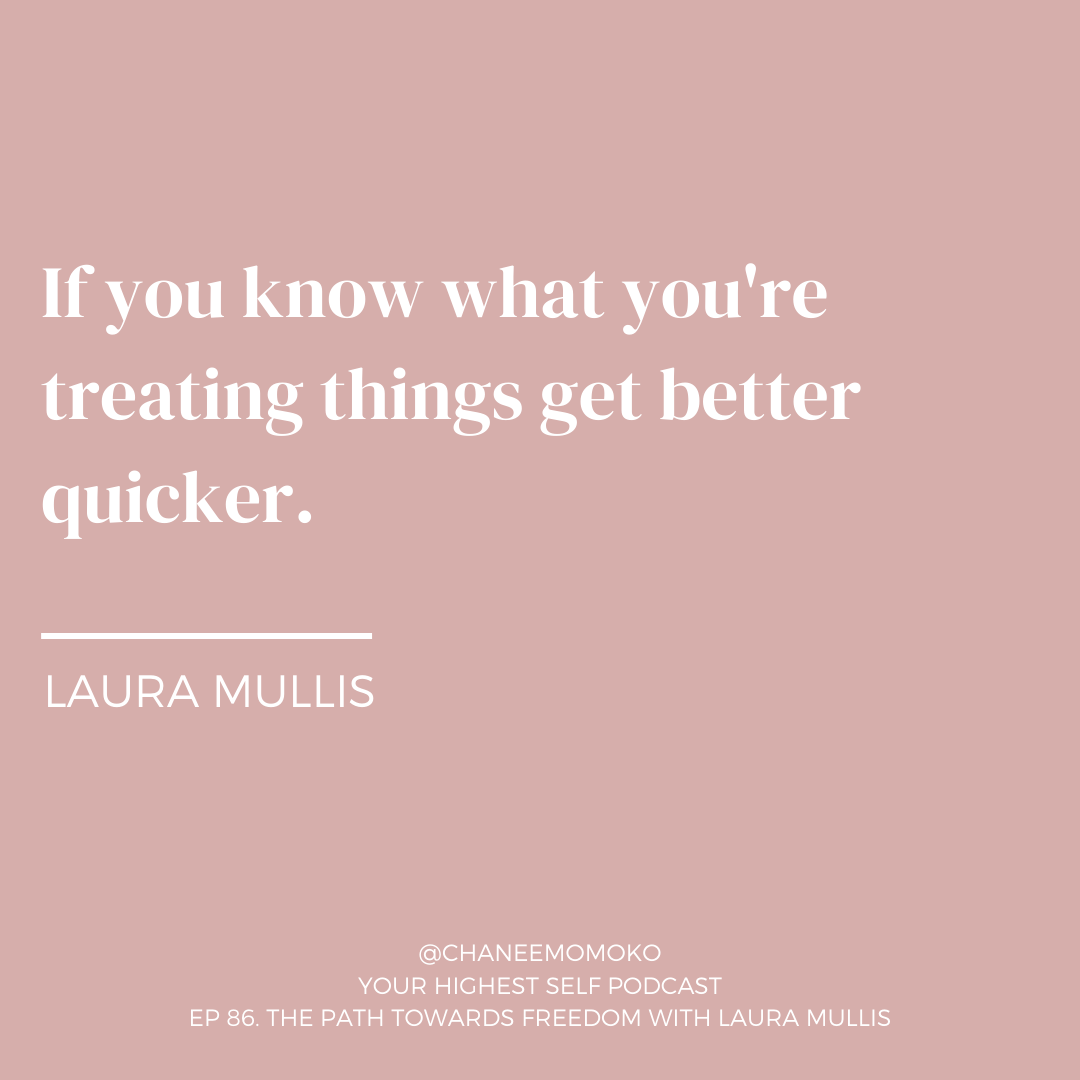The Path Towards Freedom with Laura Mullis
This week on the show I invited my friend and licensed Psychotherapist, Laura Mullis as she brings so much wisdom around doing deep work with things like trauma and how it looks like with her practice. Laura and I pretty much share the same sentiment of the significance of going inward and how our soul’s journey is coming home to yourself.
Laura’s Story
According to Laura every therapist, whether they want to believe it or not, are wounded healers. She got into this work because between the age of 11 to 19, Laura was addicted to drugs and claims to be a pretty bad drug addict. She went to treatment for 2 years and during that time she told herself that she would never work with drug addicts because they are “self-centered people.” The Universe had different plans for Laura as a series of fortunate events allowed her to wound up working in a drug treatment program where she absolutely loved it. She was working in a women’s day treatment program and while working there she would sit and talk with women about their stories which deepened her understanding as to why they decided to go the route of drug use. As she started to hear their stories she realized that what she needed to really do to help people heal was not just learn about “the 12 steps,” relapse, and coping skills. She had to help people learn how to heal from the wounds that they’ve experienced from this life because those wounds were what were keeping these women from feeling like they had to wake up everyday and use drugs/alcohol. This sent her on a 16 year journey of trying to figure out how to help people heal from wounds that they’ve picked up from this life and do it in a way that is fast and effective so they no longer have to relive it because once it’s done it is done. A lot of the healing, all that she does and offers are things that she invested in to get trained in and are things that she has experienced firsthand for her treatment. Laura believes that you can’t take people where you’ve never gone. Prior to discovering that this was Laura’s calling, she was going to be selling life insurance; this work chose her.
We so desire to make an impact on other people but often forget that the impact starts from within.
Two Types of Wounds: Trauma & Attachment
There are two types of wounds and the first one is collectively known as trauma; Laura takes that apart into subcategories of understanding trauma wounds and attachment wounds. Trauma wounds are the major life events that happen to us that kind of leave a mark in our timeline and people get to define what’s trauma to them. Attachment wounds are more about the wounding that happened because the caregivers/people who were supposed to be responsible for us did not give us what was necessary to aid in our overall wellness. Laura thinks that all children were born with this innate desire to be seen, heard, valued, understood, and to grow up in an environment that’s consistent and predictable. When this doesn’t happen it creates attachment wounding. It’s common knowledge where most people believe that if you treat your traumas, you’d be able to heal and feel better. Laura has found a lot of people where they didn’t have traumas but still had poor relationships with themselves, with others, and just couldn’t maintain stability in their lives and the reason for it was because of their attachment wounds. Over the past 5-6 years, Laura has found that attachment wounds are what creates the most problems in the world because the way we learn who we are is based on how our caregiver reflects back to us. If we have a caregiver who is responsible for our primary nurturing and that person doesn’t have a good relationship with themself, they can’t give the child what they need to develop a healthy perception about themselves. As a child, we take in our caregiver’s attachment with themselves and that becomes our attachment to ourselves which essentially becomes how we relate to the whole world. It’s all a mirror. Whatever you draw into your life is a direct reflection of what’s going on inside of you.
Attachment wounds are more of what Laura sees in her practice. Trauma is pretty easy to treat because we have the privilege of cutting edge therapies that can literally shift the way the brain processes information. Attachment wounding is what’s difficult to shift. If you have a trauma wound, it’s a certain event that is stuck in the brain and the brain can’t process it the way it’s supposed to; and if it’s one event, you can isolate that event and treat it. With attachment wounding, it’s happening day in and day out throughout a child’s life. It’s as if it’s been woven in the infrastructure of the neural networks of the brain and so it’s a lot harder to define because as Laura mentioned, it’s just the water you swam in and you didn’t know it was dirty. It also shows up everywhere - relationships with yourself, others, money, and food to name a few.
Recognizing Attachment Wounds and How Laura Discovers Them
I believe inner child healing is the root of everything. With Laura being an Expert of Disassociation, she states that if you truly have a dissociative disorder then inner child healing is going to be something you struggle to do on your own because it’s all set up around a phobia of inner experience. Think of a person that is currently doing life being afraid to go near their child self because that’s who they disowned all their wounds into. If you are this person, say you go near your inner child. Then your inner child’s response is like, “Oh thank goodness you’re here. Now I can tell you all the things that’s happened to me,” which might lead to flooding; and that’s where disassociation comes in. Disassociation is nature’s gift to us that when our body can’t run our mind does. If this is happening to you, Laura suggests that you find a therapist to help you with the process. In the therapy world, inner child healing is now called ego state therapy. If you feel like inner child healing helps you and if the disassociation piece is too much, find someone who specializes in ego state therapy.
What drives attachment wounds are 1. Unmet needs 2. Internal recordings. If you’re doing the work on your own, before doing the work with your inner child, spend a few minutes connecting with them and figuring out what your younger self needs now that you didn’t get back then. Spend a few minutes sending the intention of offering that to your younger self. That part of you is stuck because they still need their needs met in that moment. There is no one else coming to save you and you need to save yourself. You’re the one who gets to meet the needs of your younger self. Some core needs that usually need to be met are safety, feeling seen, unconditional love/acceptance, and a warm presence.
One of my clients in the Highest Self Mastermind was having trouble posting on her social media as she is someone looking to build her online community as a coach. The biggest thing I’ve seen with my clients is their fear of being seen. We connected that one of her attachment wounds was not being seen as a child by her mother and she felt, “Well, what if post content and no one recognizes my work? What if no one likes it? What if it helps no one?” - She’s self-rejecting herself because of that fear of being seen because she never saw herself. We tied it back to setting the intention before she presses post and acknowledges that this is an action she is taking for her inner child by telling her, “I see you and therefore we are posting this content.” We’re not posting content to be seen.
Laura talks about how she figures out people’s wounds and prefaces how everyone is different. She does intensive therapy where people come to her for 3 days and she spends 18 hours in someone’s mind. Two people can come to her with a burden wound and they can present themselves similarly in terms of symptoms but they were created differently. The way Laura figured that out was that one thing that happens whenever you are raised by people consistently and how you feel they should be treating you doesn’t match how they treat you, creates confusion in the mind. When the mind gets confused, it doesn’t do us any favors and makes a recording of those people being in that way and then it takes and stores that recording inside the mind and that recording looks like, acts like, and sounds like anyone. This recording has a message attached to it; and the message attached to the recording is usually what’s keeping people’s patterns in their lives alive. Laura finds it so interesting when she is working with an inner child and then she asks the inner child, “As you look around, who do you see sending you a message?” and they start telling her who they are and she starts to see how the messages interact which results in her piecing together how and why a person does certain things. If you can figure out the messages you’ve internalized and your unconscious recordings then you have the first step in overcoming the messages.
Laura’s Take on Doing Inner Work
For Laura personally, she’s been on a constant therapy journey since she was 19 years old. Her experience ranged from talk therapy to EMDR to ego state therapy (this was something huge for her because it’s where she realized she didn’t have the trauma wounds). Whenever she did EMDR, which is therapy that is used to treat trauma, she didn’t have a thorough flow for her healing because that wasn’t the proper treatment for what she was experiencing. The attachment wounds is where things really shifted for Laura and where she was able to piece her story together. She did a few intensives with her mentors and then found the world of hypnotherapy. At this point, once a month she does a hypnotherapy session with her mentor, does self-recordings, and has coaches in her life. Laura chuckles about how it takes a lot of work to be a sane human being.
Aside from all the modalities of doing the work mentioned, Laura has consistently done a daily morning routine. It takes her 45 minutes and it’s her form of self-care that gets done prior to dealing with people. She meditates everyday, does her spiritual practices, self-hypnosis, and then sits in reflection about who she is working with for that day to see what direction she should take next in their process. All of it combined, Laura’s take on doing the work is how we work on ourselves. It’s not just about therapy but about the things you do outside of therapy too. We can’t just show up once a month to our therapist and have them figure everything out for us. We have to spend time with ourselves because you are the most important relationship in your life. Everyday she spends at least 45 minutes alone and this has truly been what’s most healing for her, learning how to be with herself. If you fall in love with yourself, you don’t really need anyone else.
Doing the work is setting yourself up so you’re not letting yourself down anymore. Stop being a doormat. Stop putting yourself last. It’s not selfish to create time for yourself because that’s going to be the foundation of your inner work.




